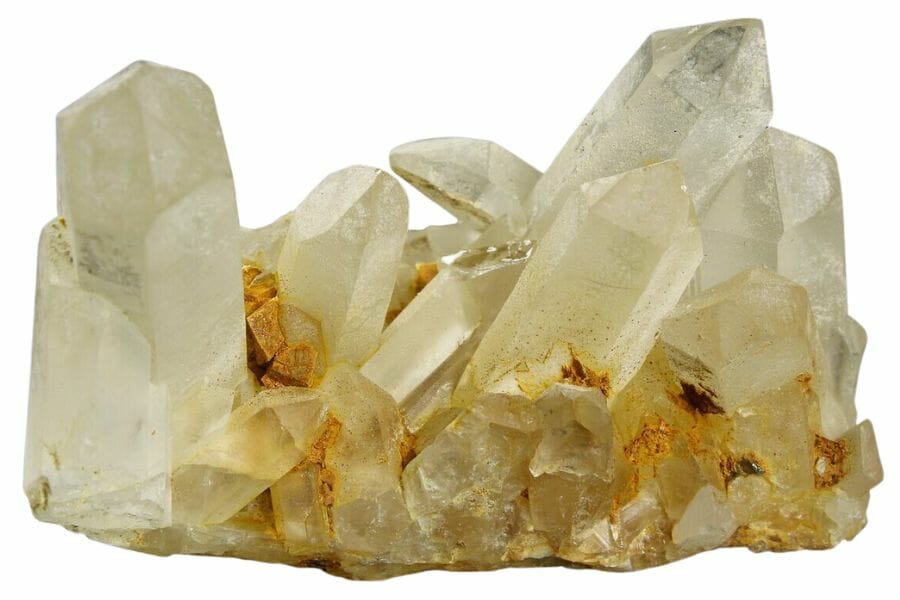Quartz is one of the most common minerals on Earth and also one of the coolest. It’s pretty fun to identify quartz, especially because it’s everywhere! You might find it in mountains, beaches, and even in your backyard.
You can also find quartz in various countries and climates, from the snowy peaks of the Himalayas to the sandy beaches of Brazil.
For those in the United States, there’s great news: quartz is abundant in many states, so there’s no need to venture far to find it!
By the end of our journey, you’ll know where to look for quartz, how to hunt for it, and the surefire signs that you’ve found a real piece.
What is quartz?
Quartz is made from silicon and oxygen. It forms deep in the Earth when hot liquid rock cools and hardens.
For those into quartz hunting, the thrill is knowing this shiny gem is all around. In the United States, quartz can be found in many spots! Places like Arkansas and North Carolina are famous for their big and beautiful quartz crystals.
But that’s not all. You can stumble upon quartz in mountain ranges, riverbeds, and even some deserts. So, whether you’re on the east coast, west coast, or somewhere in between, keep those eyes peeled.
The different types of quartz
Each quartz type has its own unique look and story of how it formed. Dive in to discover the fascinating world of quartz varieties and what makes each one special!
Herkimer Diamond

Even though they’re called “diamonds,” Herkimer diamonds are actually super special quartz crystals. What sets them apart is their extra shiny, double-terminated shape, which means they have points on both ends.
These gems come from a specific spot, mainly around Herkimer County, New York. That’s why they get their unique name.
While you can find quartz all over the world, if you’re hunting for a true Herkimer diamond, New York is the place to be. With their clear beauty and unique shape, these gems sure have a sparkle that makes them stand out in the quartz family!
Amethyst
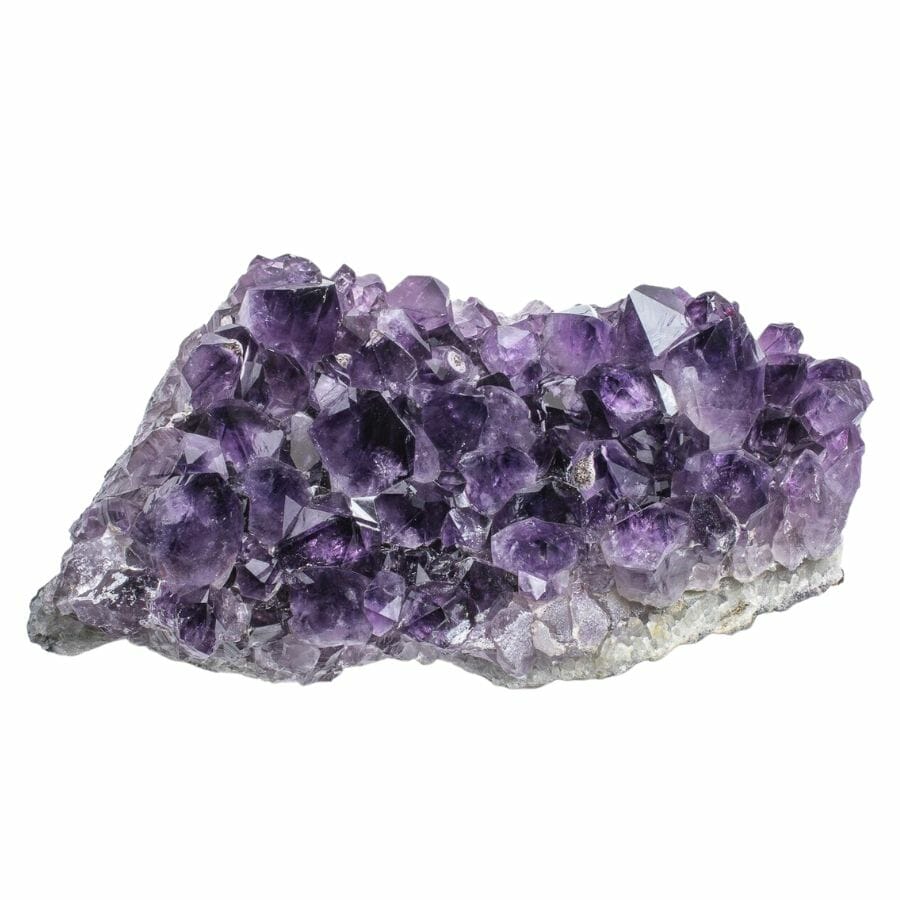
Amethyst is known for its stunning purple color, which can range from light lavender to deep violet. This beautiful hue comes from iron and other minerals inside the crystal.
While quartz is found all over, amethyst has special spots it calls home. Some of the most famous amethyst mines are in Brazil, Uruguay, and even parts of North America.
It’s not just its color that makes amethyst unique. People have loved and valued this gem for centuries, using it in jewelry and art. So, if you spot a purple sparkle, you’ve likely found an amethyst gem!
Chalcedony
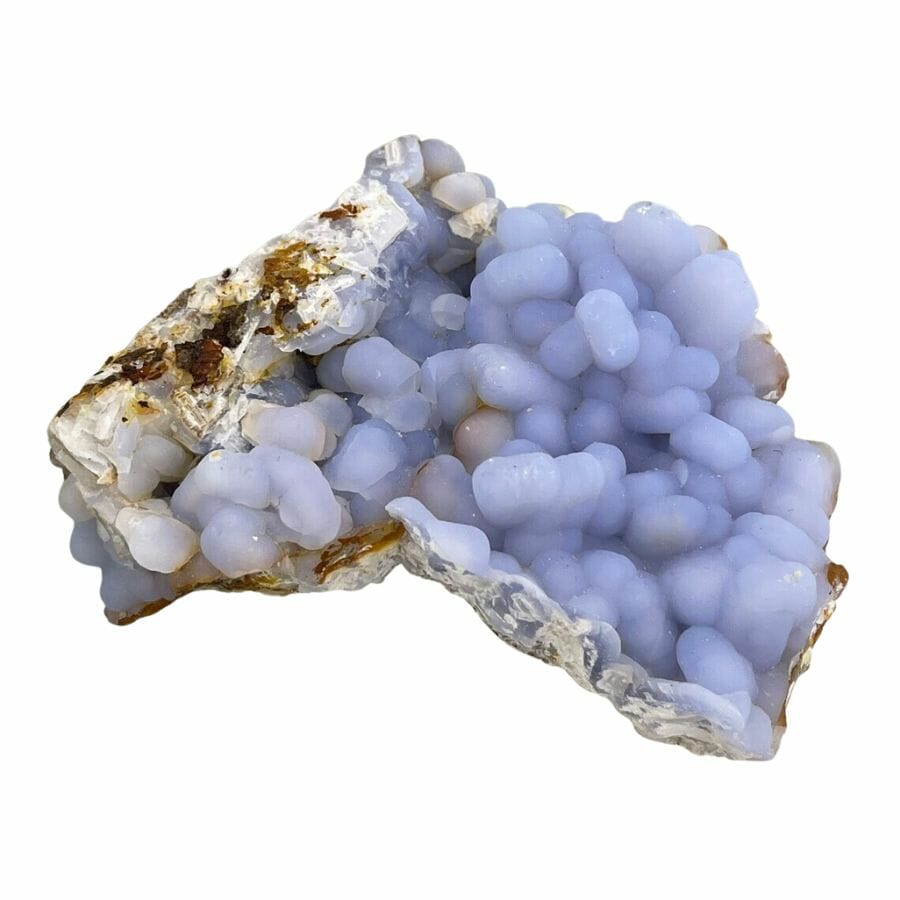
Unlike some quartz that’s clear and see-through, chalcedony is often milky or waxy. It comes in a range of beautiful colors, from soft blues and greens to pretty pinks.
What’s really fun is that sometimes, chalcedony has patterns or bands of different colors inside. It also often comes in botryoidal crystals, which means that the crystals are round and bunched together like grapes.
As for where to find it, chalcedony loves to pop up in volcanic rock areas and can be found in places like India, Brazil, and Madagascar. Each piece of chalcedony is like a tiny work of art made by Mother Nature!
Dumortierite Quartz

Dumortierite quartz is eye-catching because of its splotches of deep blue color. This unique shade comes from the dumortierite mineral inside the quartz. When these two team up, the result is a rock that’s both beautiful and rare.
While you can find quartz in many parts of the world, dumortierite quartz loves to hang out in places like Brazil, the United States, and Madagascar.
So, if you ever see quartz-like crystals with blue inclusions, there’s a good chance you’re looking at the lovely dumortierite quartz.
Citrine
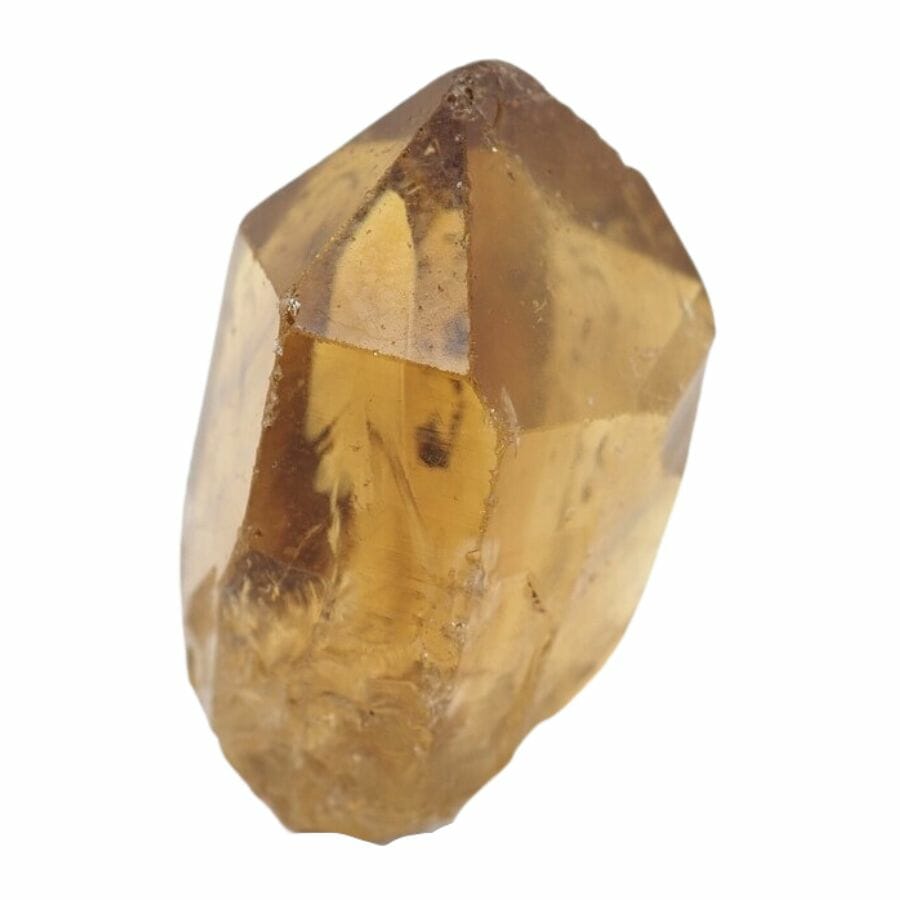
Known for its bright yellow to brownish hues, it’s easy to see why citrine is loved by so many. This sunny color comes from traces of iron in the quartz.
Citrine is extra special because it’s rare in nature. Most citrine sold today is heat-treated amethyst.
While quartz is pretty widespread, natural citrine prefers places like Brazil, Bolivia, and parts of Russia.
Milky Quartz
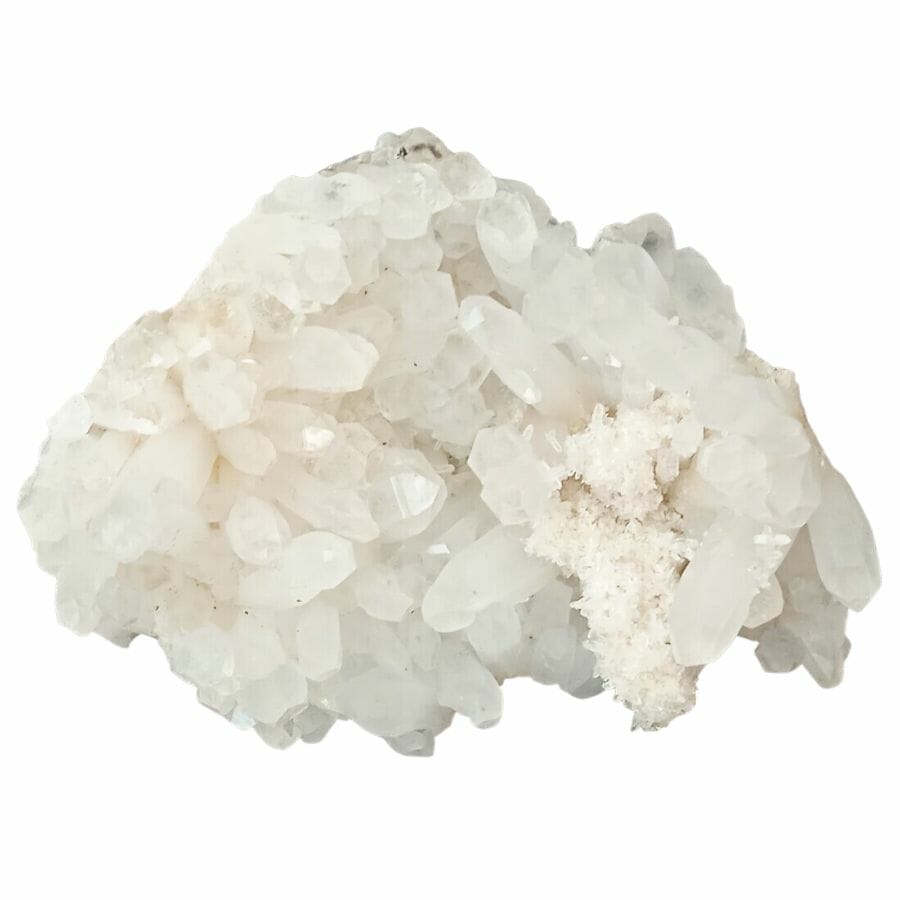
Milky quartz has a soft, cloudy appearance that sets it apart from its clearer relatives. Its dreamy, white hue comes from tiny liquid and gas bubbles trapped inside. How quartz forms plays a big role in giving milky quartz its unique look.
This type of quartz is pretty common and can be found almost everywhere. From mountaintops to backyards, it’s around the globe, making it more widespread than some of its colorful cousins.
Rose Quartz
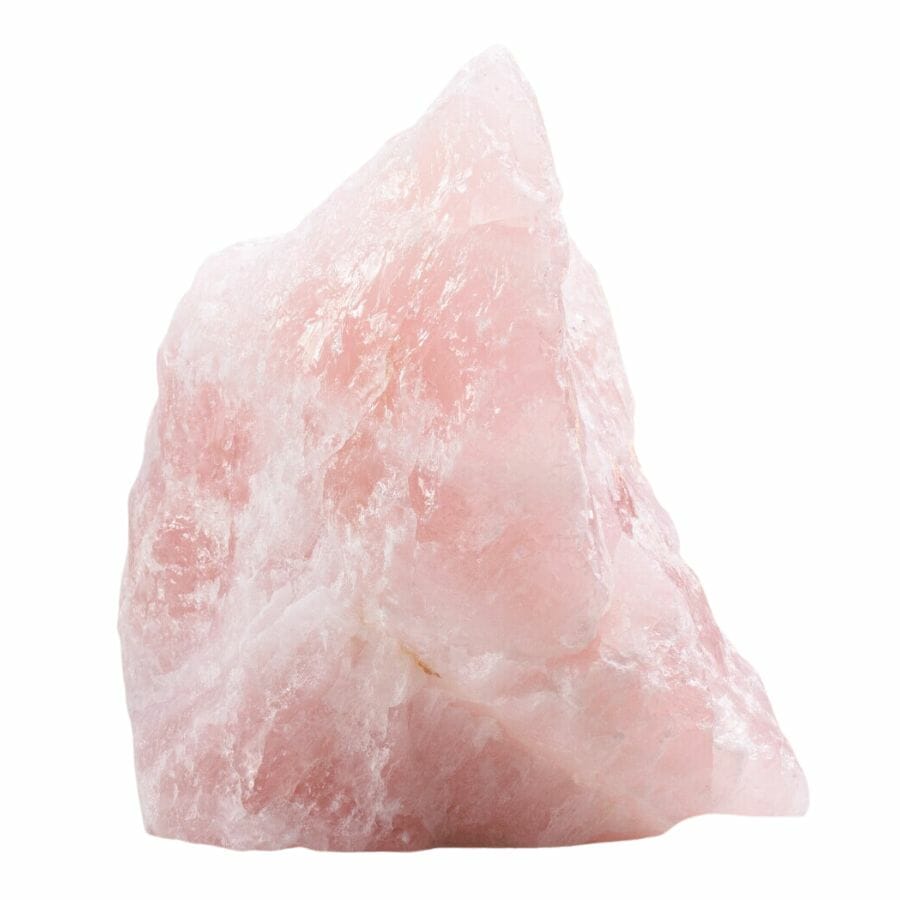
Rose quartz gets its soft pink hue from tiny amounts of titanium, iron, or manganese. People adore this gem for its soothing and romantic color.
While many quartz varieties can pop up all over the world, rose quartz has favorite spots. Some of the best places to find it are in Brazil, South Dakota in the USA, and Madagascar. Each piece feels like holding a bit of a sunset.
Smoky Quartz
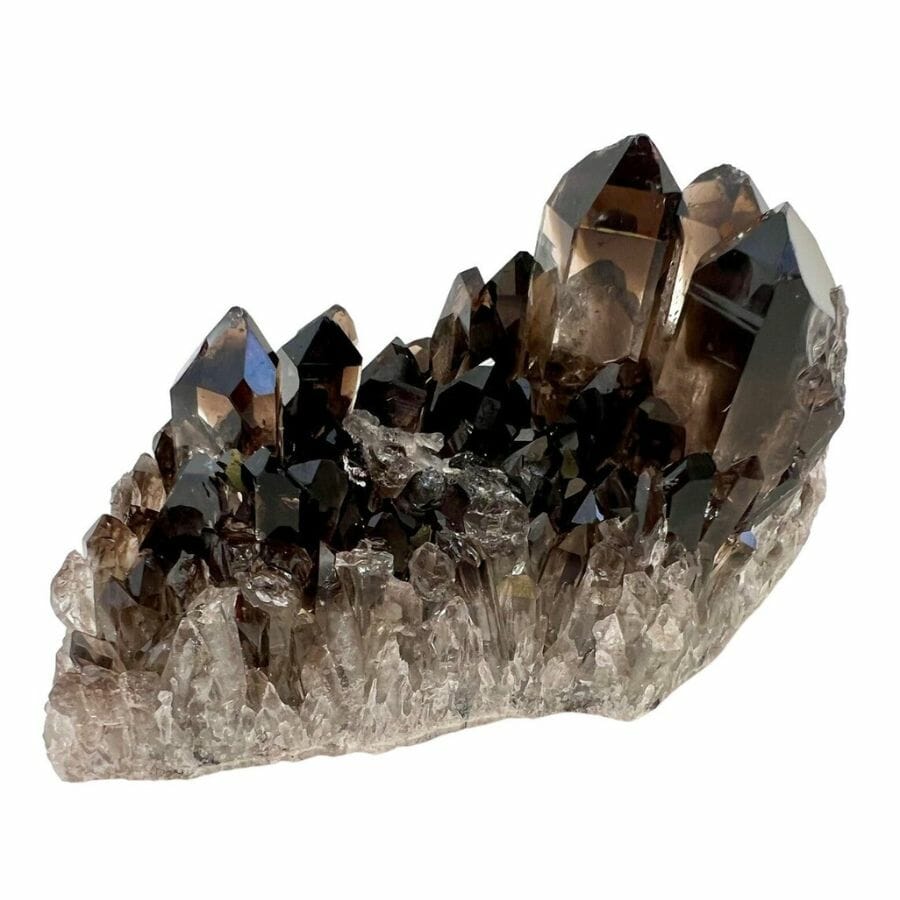
Smoky quartz boasts shades from light brown to deep, almost black hues. This moody color comes from natural radiation hitting the stone.
While many quartz types can be found in many places, smoky quartz enjoys being in mountain regions. Brazil, the Swiss Alps, and parts of the USA are popular spots for this gem.
So, if you stumble upon a dark, clear stone with a smoky touch, you’re likely gazing at smoky quartz.
Rutilated Quartz
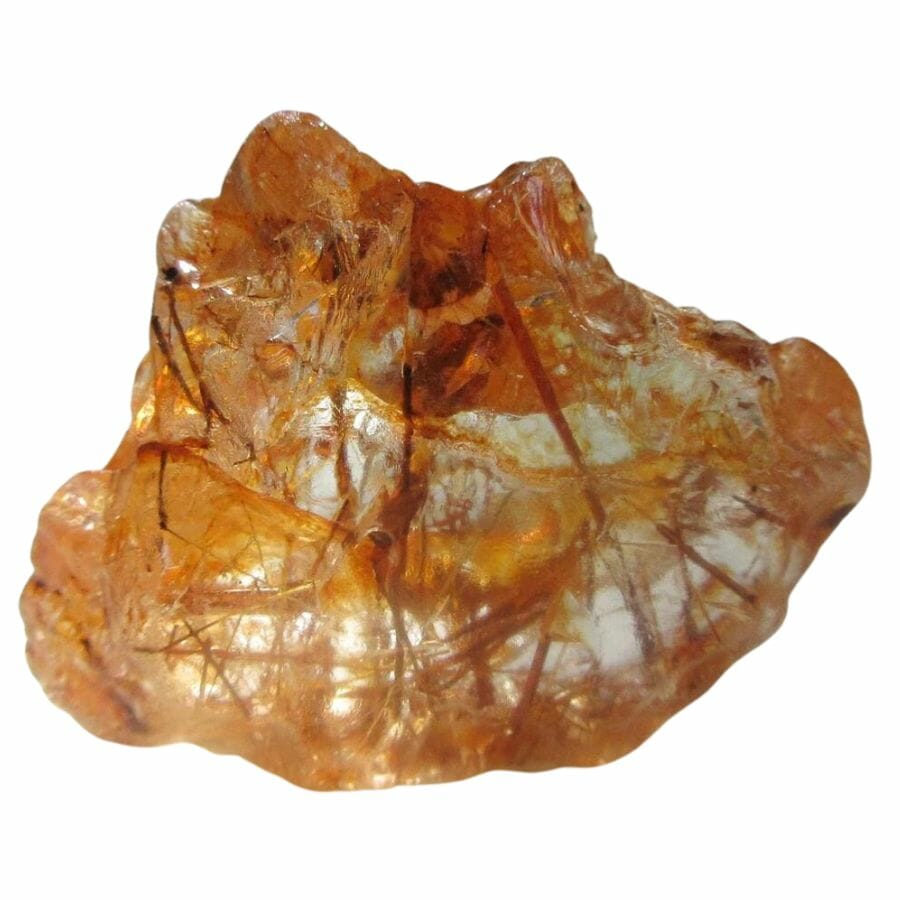
Rutilated quartz has golden, silver, or even red threads, known as rutile, darting through it like mini lightning bolts. These streaks give the stone a fascinating, starry appearance.
It’s not just the look, but the feel of the stone that captures hearts; many believe it carries positive energy.
While quartz can be found in many spots worldwide, the best rutilated quartz often hails from Brazil and Madagascar.
Tiger’s Eye
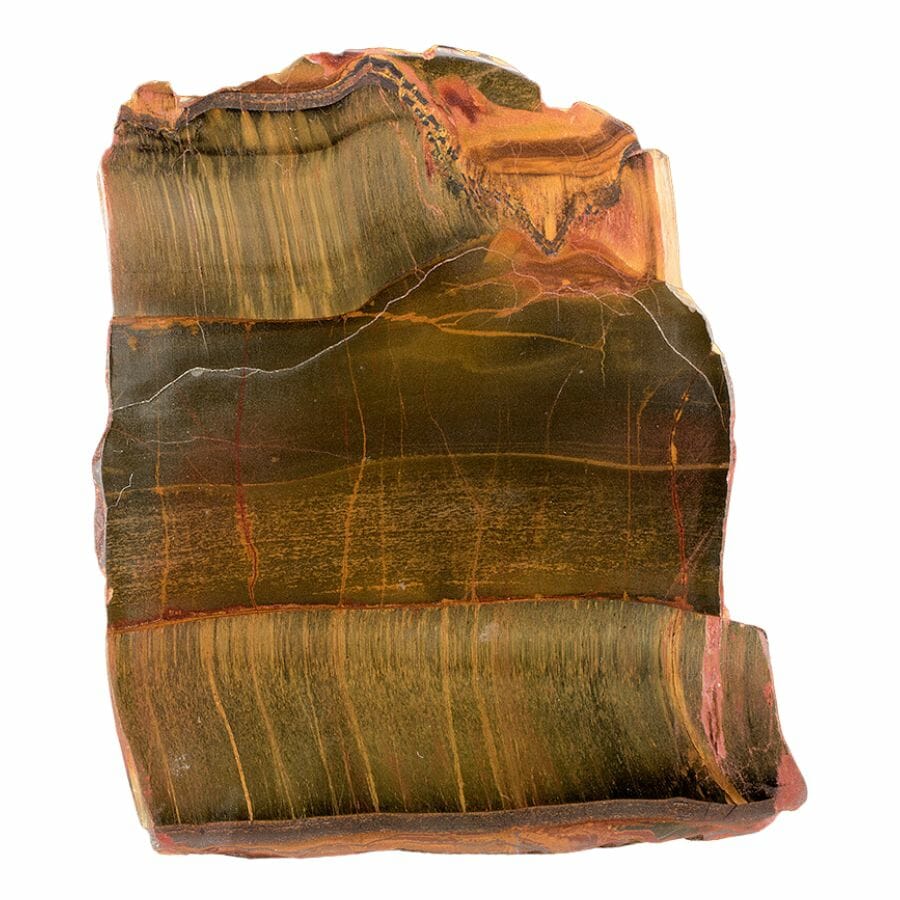
Tiger’s eye shimmers with a golden-brown hue and has a cool, silky sheen called “chatoyancy.” This unique appearance is caused by fibrous inclusions reflecting light in a certain way.
Besides being pretty, many people wear it, thinking it brings courage and protection.
Now, while you can find quartz varieties almost everywhere, tiger’s eye is a bit choosier. It loves the warm soils of South Africa, Australia, and India.
Where to find quartz
This shiny gem is sprinkled all across the United States, waiting for adventurers to discover it. Some places are real hotspots for quartz hunting, offering bigger and clearer crystals than anywhere else.
Get ready to learn about the top spots where this sparkling treasure hides in abundance!
Mount Ida, Arkansas
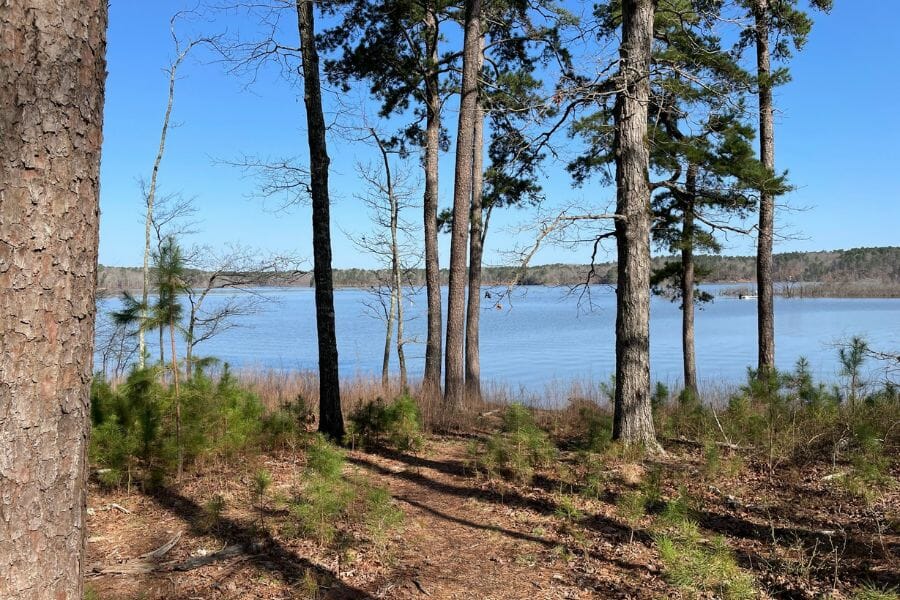
Mount Ida is known as the “Quartz Crystal Capital of the World,” and for good reason. This charming town is nestled in the heart of Arkansas and boasts some of the most impressive quartz locations you’ll ever come across.
If you’re on the hunt for sparkly gems, this is your go-to spot. You can find all sorts of quartz here, from clear and shiny crystals to stunning clusters that shimmer in the sunlight. The smoky quartz and milky quartz are especially popular finds.
Plus, the area is dotted with mines where you can dig up your very own treasures.
Herkimer County, New York
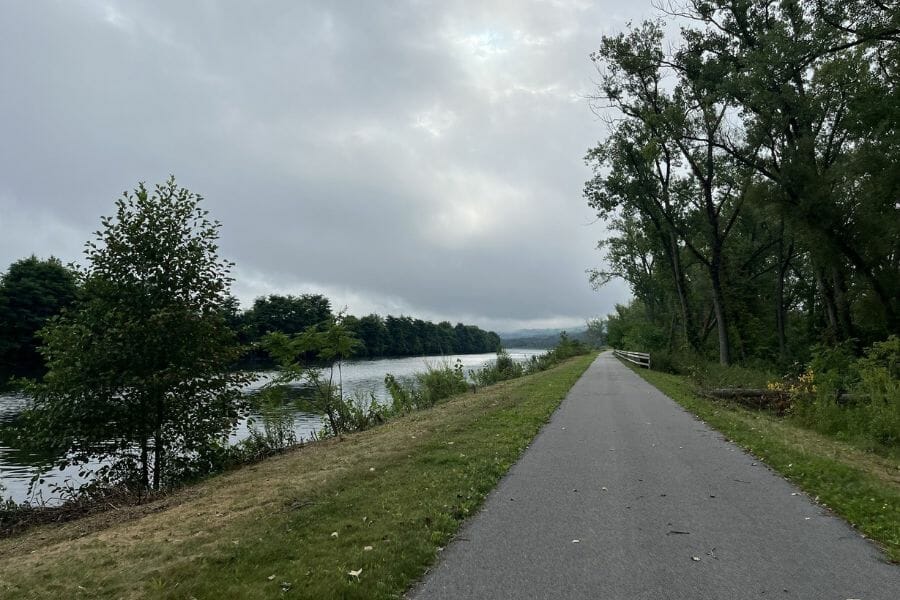
Tucked away in Herkimer County is a unique kind of quartz that has made the area famous among rock enthusiasts. It’s here where you can find Herkimer diamonds, which are quartz crystals that are so clear and perfect that they resemble diamonds.
But that’s not all; apart from these dazzling diamonds, you might also stumble upon smoky or golden quartz varieties.
Crystal Park, Montana
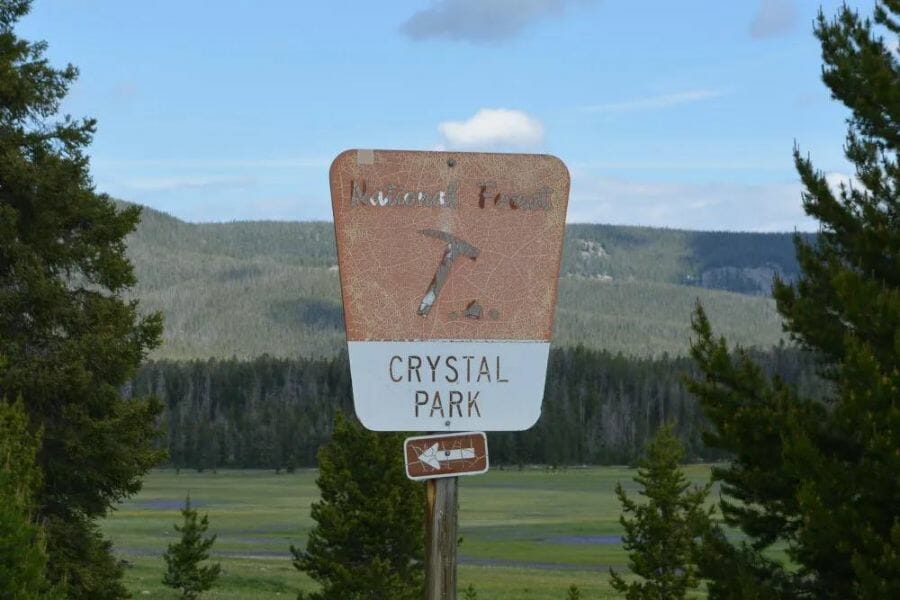
Nestled among the scenic mountains, Crystal Park is a hotspot for those eager to uncover shiny gems. When you’re looking for quartz, this is one of the best places to start.
The soil here hides clear, smoky, and even amethyst quartz crystals just waiting to be discovered. These gems are often found with unique shapes, making every find truly special.
The park’s natural beauty combined with the thrill of unearthing your own crystals makes it an unforgettable experience.
Blue Ridge Mountains, North Carolina
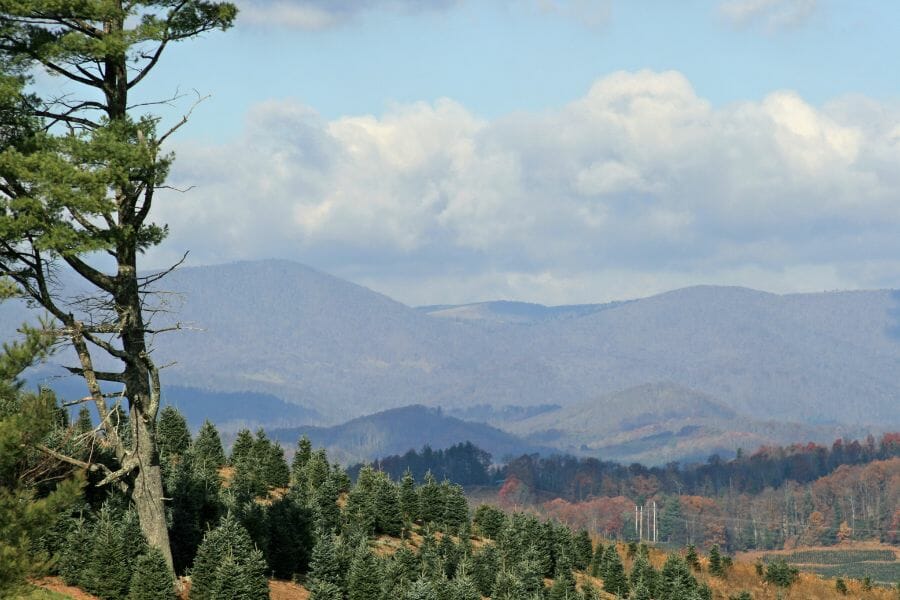
Blue Ridge Mountains are more than just beautiful rolling hills and breathtaking views. If you’re wondering where to find quartz in real life, then this is your spot. The area is rich with quartz crystals, including clear, smoky, and even rose quartz.
As you explore, you might uncover these shiny treasures peeking out from the soil or hidden among other rocks.
The Blue Ridge Mountains don’t just offer a feast for your eyes with their beauty; they also promise the excitement of discovering lovely quartz crystals.
Pikes Peak, Colorado
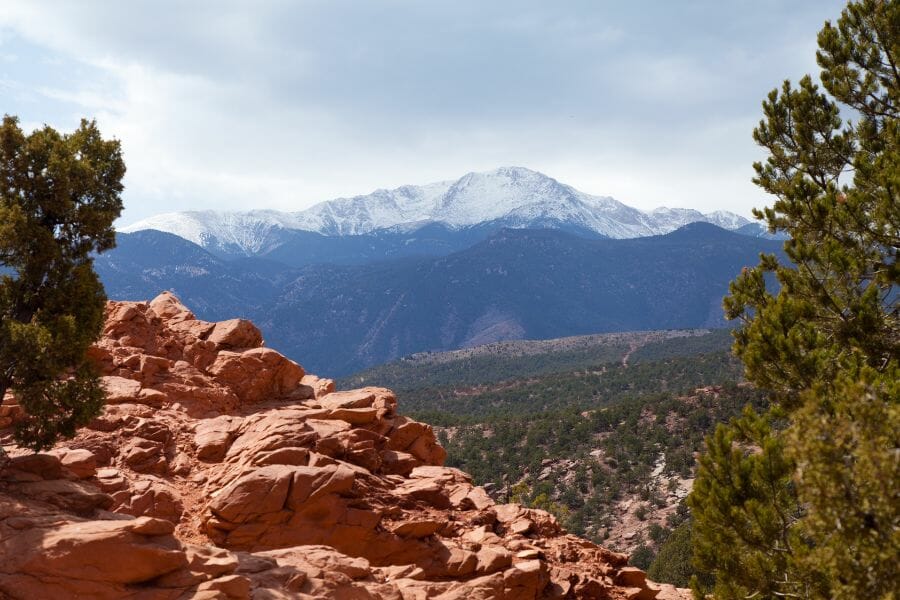
Pikes Peak is more than just a towering mountain with amazing views. This area is known for having an abundance of quartz crystals. From clear crystals to smoky quartz, and even rose quartz, the varieties are impressive.
As you hike or explore around Pikes Peak, there’s a good chance you might stumble upon these beautiful stones, just waiting to be discovered. Many rock enthusiasts and collectors love visiting this mountain specifically for this reason.
How to find quartz
Some folks find quartz while hiking in the mountains, others spot it on beaches or riverbeds. There are even special mines and locations dedicated to hunting for quartz crystals.
Let’s dive into the different ways you can stumble upon this sparkling beauty in nature.
Wait for a sunny day after rain
If you’re excited about finding quartz, a sunny day after a good rain is one of the best times to look. The rain washes away the dirt and dust, revealing the shiny and sparkly bits hiding beneath.
As the sun shines bright, quartz pieces reflect light and can often twinkle from a distance. Keep your eyes peeled for those gleaming spots on the ground.
And remember, quartz can be found in many places, from creek beds to hiking trails.
Look in roadcuts
Roadcuts are a neat place to start if you want to look for quartz! When roads are made through hilly or rocky areas, big chunks of earth are cut away, exposing different rocks.
This can give us a glimpse into how quartz is formed and where it’s hiding.
As you pass by roadcuts, you can often spot the shiny, clear-to-milky white crystals of quartz peeking out from the rocks.
Just remember to be safe! If you want to take a closer look, make sure you’re in a safe spot away from traffic.
Search in mine tailings
Mine tailings are leftover materials after minerals are extracted from the ground. When miners dig deep and sift through the earth, they leave behind piles of these unused rocks and materials.
In these piles, you can often find sparkling bits of quartz.
Wearing gloves and using a small shovel or pick, you can sift through tailings to find these hidden gems.
Remember, always get permission if the tailings are on private property. Safety comes first, so always wear protective gear like safety glasses and sturdy shoes.
Check the mineral veins of rocks
Quartz loves to hang out in the mineral veins of rocks. These veins are like nature’s highways, where minerals travel and settle over time. So, when thinking about how to find quartz, mineral veins are a great place to start!
Look for cracks or lines running through rocks; often, these are filled with different minerals. As you inspect the veins, keep an eye out for the clear or milky-white sparkle of quartz.
Using a small hammer and chisel can help you gently extract the quartz crystals. Always be careful, and wear safety glasses to protect your eyes. With patience and practice, checking mineral veins can lead to some amazing quartz discoveries!
How to identify quartz once you find it
Quartz is super popular, but sometimes, it’s easy to mix it up with other shiny rocks. Luckily, there are some cool tricks to help tell quartz apart from the rest.
What quartz looks like on the outside
While it has a variety of forms, there are certain features that make it stand out. Here are some of the things you should look out for if you want to be able to identify quartz crystals.
Always cool to the touch
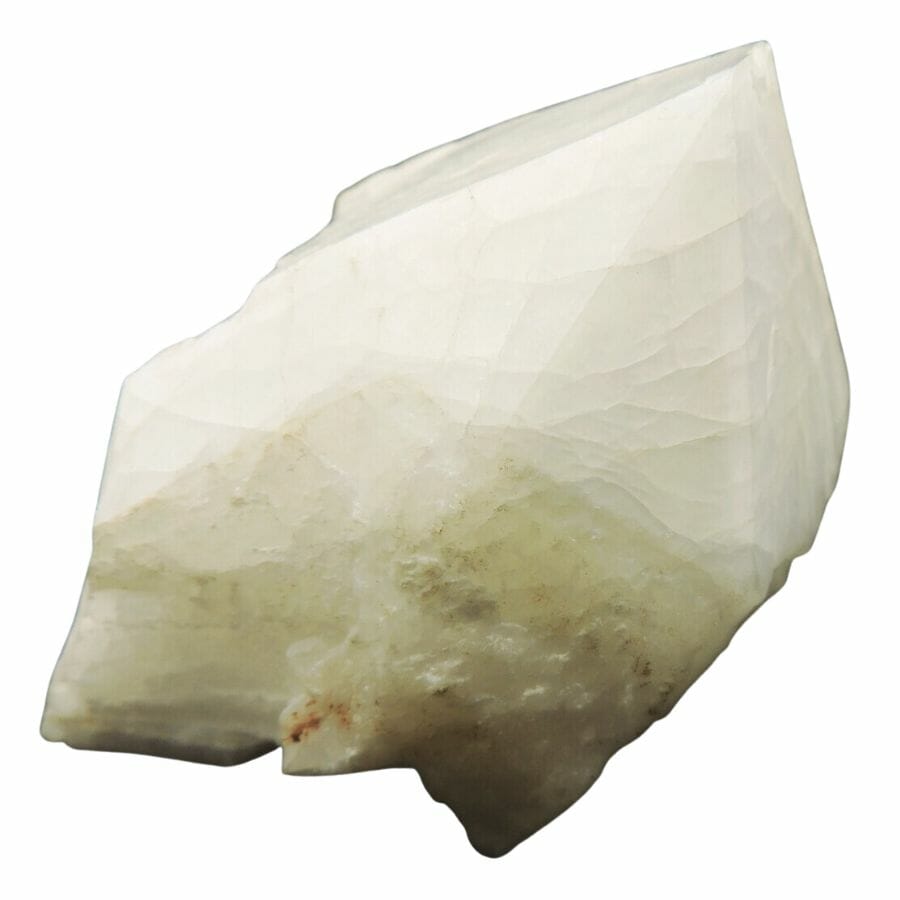
Quartz is a fascinating mineral, and one of its cool features is its temperature. No matter where you find it or what the weather is like, quartz always feels cool to the touch.
Knowing this is a big help in figuring out how to identify quartz among other rocks. If you’re outside on a warm day and pick up a rock that feels unexpectedly cool, there’s a good chance you’re holding quartz.
This unique trait sets it apart from many other stones.
Crystal shape
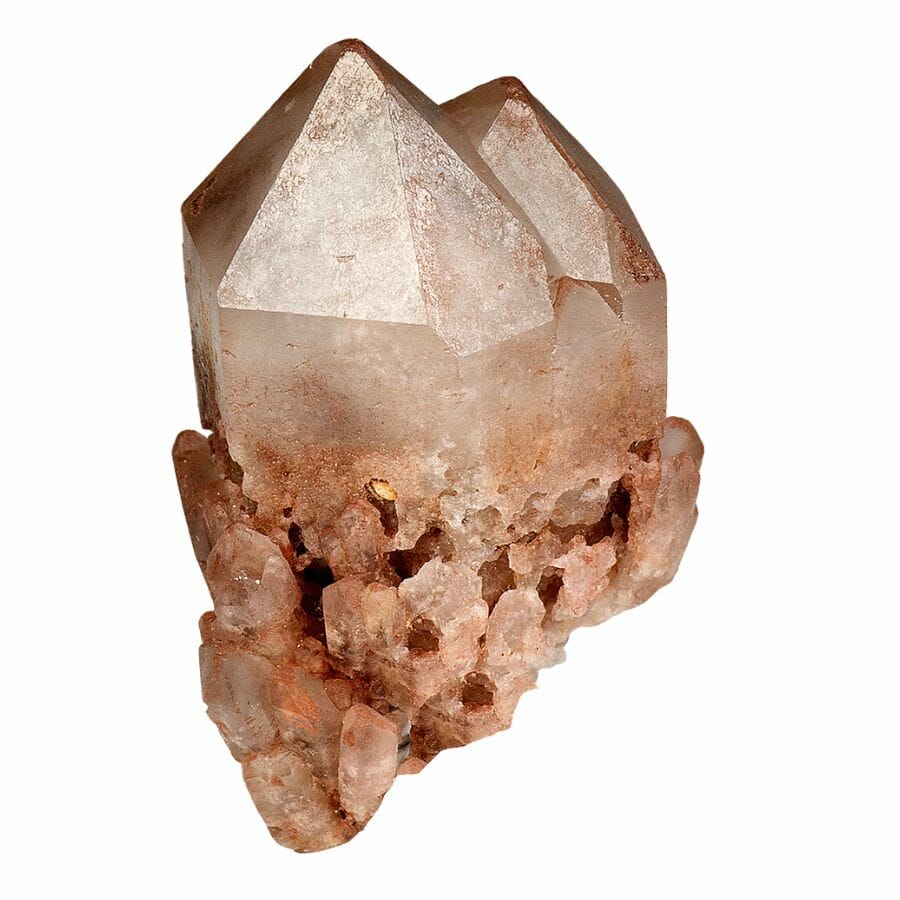
It’s super cool to think about what quartz looks like on the outside, especially when you find one that’s perfectly shaped! Most of the time, quartz grows as elongated crystals with six flat sides, forming a six-sided prism that ends in a sharp point.
But remember, quartz has its fun variations too. Some kinds, like chalcedony, don’t always stick to the prism look and can be botryoidal.
Pointed termination
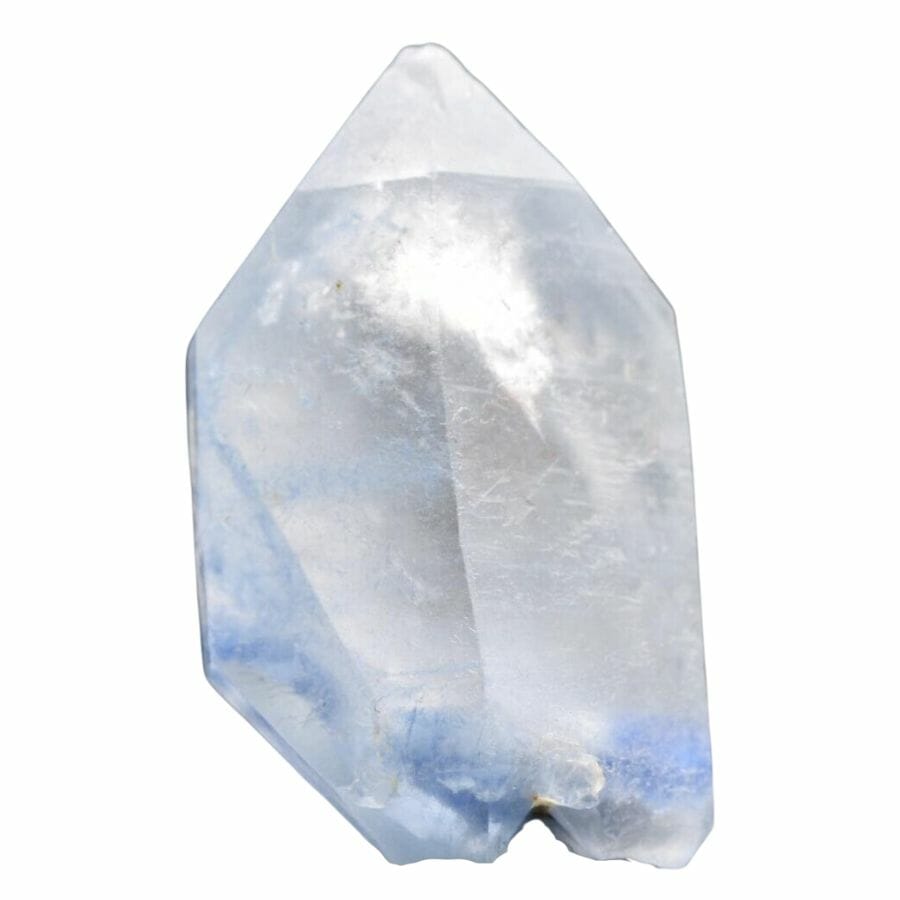
One of the standout features of quartz is its terminations. These are the pointy ends or tips you often see on a quartz crystal. For those diving into quartz identification, spotting these terminations can be a big hint you’ve found the real deal.
These terminations happen because of the way quartz crystals grow. As they form, they push outwards in a specific direction, leading to these natural pointy tops.
What quartz looks like on the inside
While the outer appearance of quartz is fascinating, the inside tells a whole different story. Let’s dive into the intriguing world of quartz’s inner beauty and see what surprises it holds for us!
Inclusions
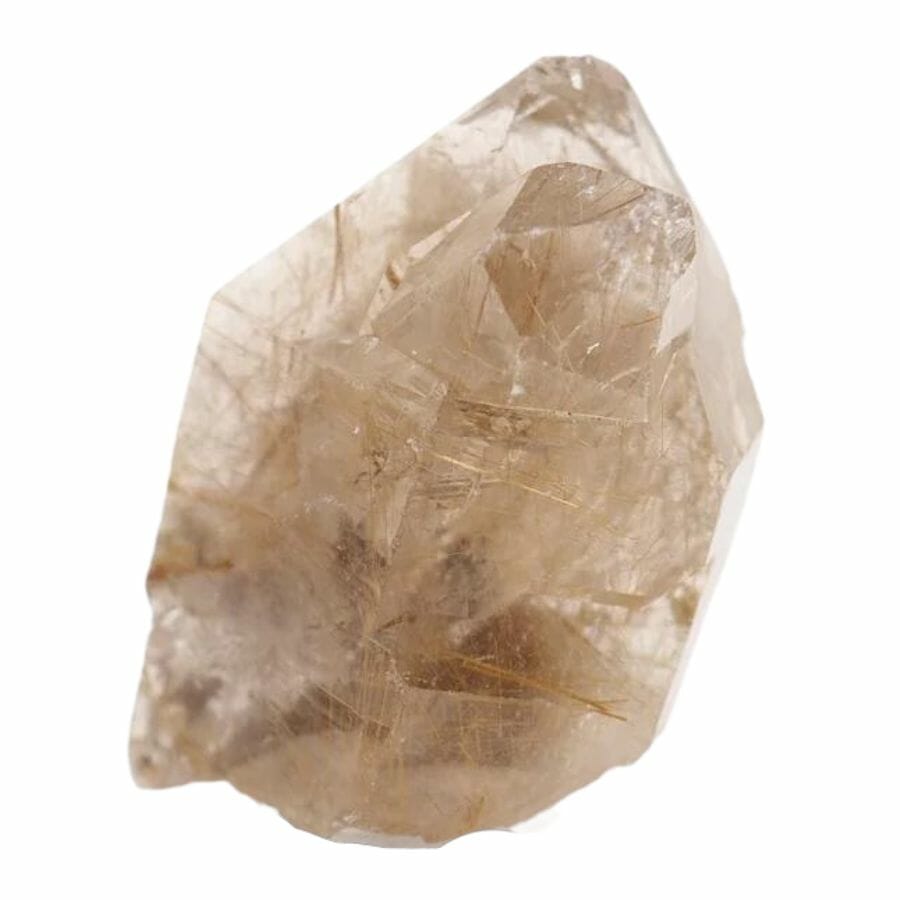
Quartz often has little surprises inside called inclusions. These inclusions are tiny imperfections, making each quartz unique. If you want to know how to find quartz, you’ll have to keep an eye out for these inclusions.
One might stumble upon pieces with fascinating inclusions, ranging from small minerals to even water bubbles trapped for eons. Some quartz crystals have streaks of gold or silver, while others might show off green chlorite or black tourmaline.
Conchoidal fracture
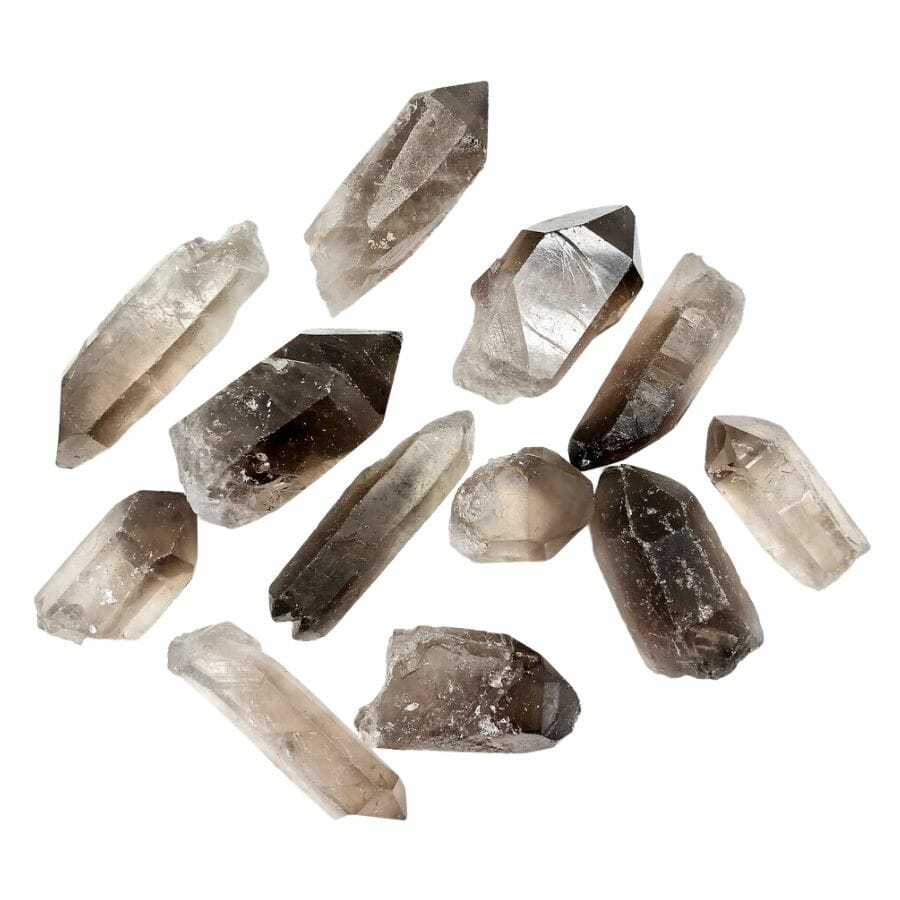
Quartz has what’s called a conchoidal fracture. Think of it like the curved shape you see when you look at a broken piece of glass or the inside of a clamshell.
This kind of break doesn’t have flat surfaces like some other rocks. Instead, it’s wavy and smooth. This special feature makes quartz easy to spot among other minerals.
If you ever find a rock with this clamshell-like break, there’s a good chance it could be quartz!
Phantom quartz
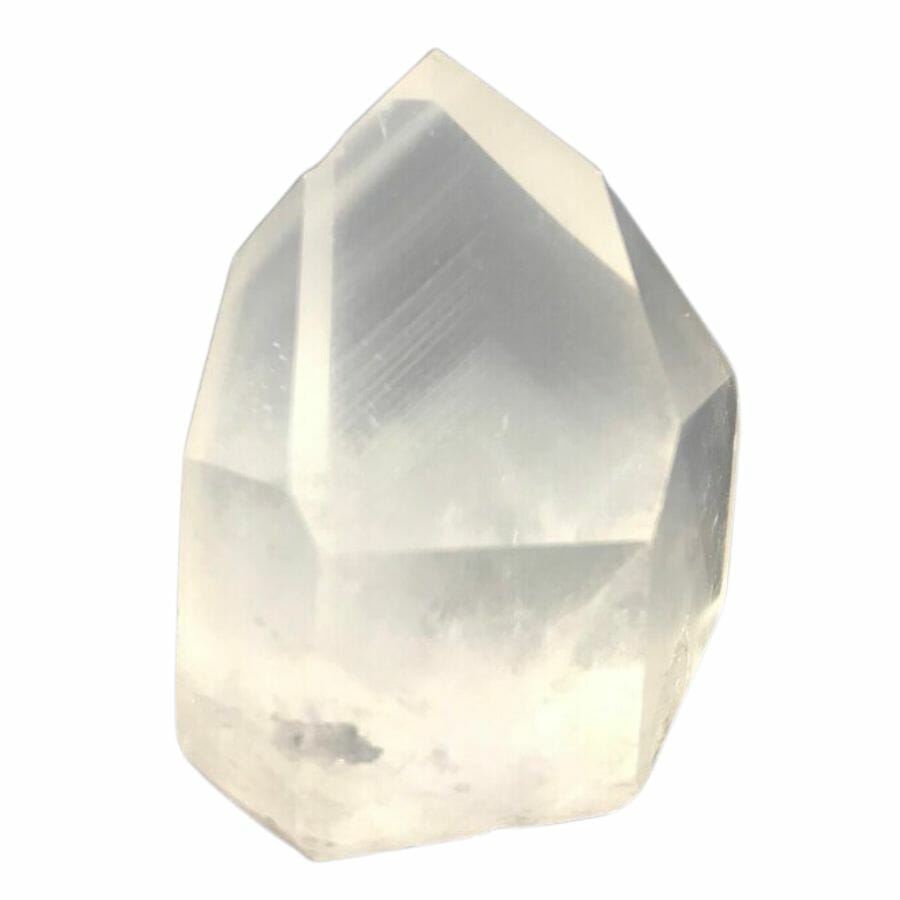
When you peer into phantom quartz, you’ll see ghost-like outlines of another smaller crystal inside.
These crystals capture a moment in time, where growth paused and then started again, often over millions of years.
Layers of dust, minerals, or even other tiny crystals settle on the quartz during a pause, and then the quartz continues growing around this layer.
This leaves a shadow or “ghost” of the earlier growth stage, creating the appearance of a smaller crystal shape inside the bigger one. It gives a glimpse into what quartz looks like on the inside, telling a story of its journey.

